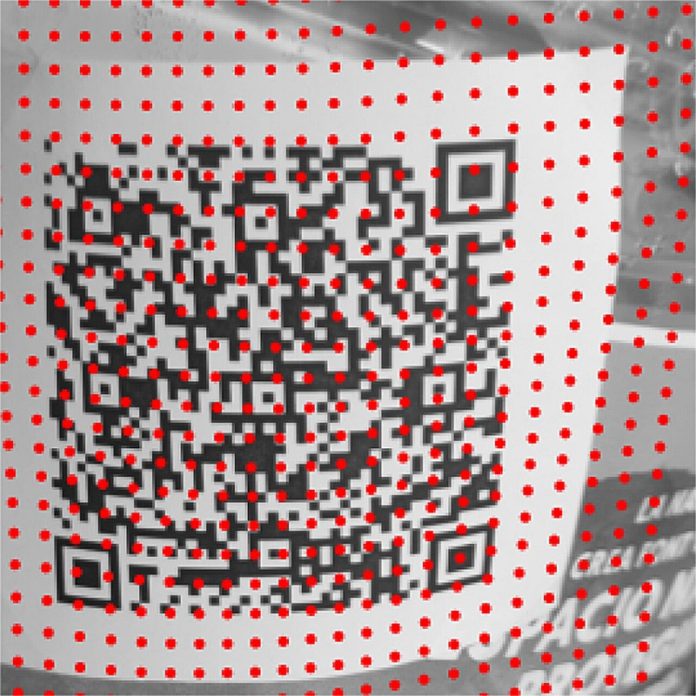
Scanning a QR code on an uneven surface, like a bottle or a food tray, can often be frustrating. Many times, even with a good camera, QR codes fail to scan properly due to poor image quality or irregular surfaces.
To solve this issue, a team from the University of Barcelona and Universitat Oberta de Catalunya has developed a new algorithm that helps read QR codes even when they are printed on non-flat or deformed surfaces.
Their findings are published in the journal Pattern Recognition Letters.
This new system is designed to work with QR codes on various surfaces, such as curved bottles or packages with uneven wrapping.
It’s the first technology to combine a general method with two-dimensional barcodes, making it easier to read QR codes in challenging physical environments.
QR codes are a type of barcode that store digital information in a matrix of black and white squares, which can be quickly scanned by smartphones or other devices.
However, there are common challenges in reading QR codes accurately.
As Professor Ismael Benito, one of the lead researchers, explains, poor image quality, low print contrast, and uneven surfaces can all interfere with the scanning process.
For example, if a QR code is printed on a cylindrical surface like a bottle, scanning becomes difficult when the code is too close or too far from the camera.
At a close distance, the curved surface distorts the image, while at a greater distance, the code becomes too small to read. Benito notes that finding the right distance—typically 30 to 50 centimeters—is key to successfully capturing the code.
To address these issues, the research team created an algorithm that uses the QR code’s internal patterns to extract details about the surface it’s printed on.
The algorithm adjusts for surface deformations using mathematical functions called splines, which are commonly used in fields like geology and photo editing.
These functions adapt to the unevenness of the surface, allowing the QR code to be read accurately even on irregular or curved surfaces.
While this technology marks significant progress, there are still challenges ahead. Benito points out that in commercial applications, the main goal is to ensure reliable and secure QR code readings. Additionally, in industrial settings where QR codes are scanned in controlled environments, the focus is on improving the speed of capture.
This breakthrough could make it much easier to scan QR codes on various surfaces in everyday life, opening the door to more practical and reliable uses of this technology.



